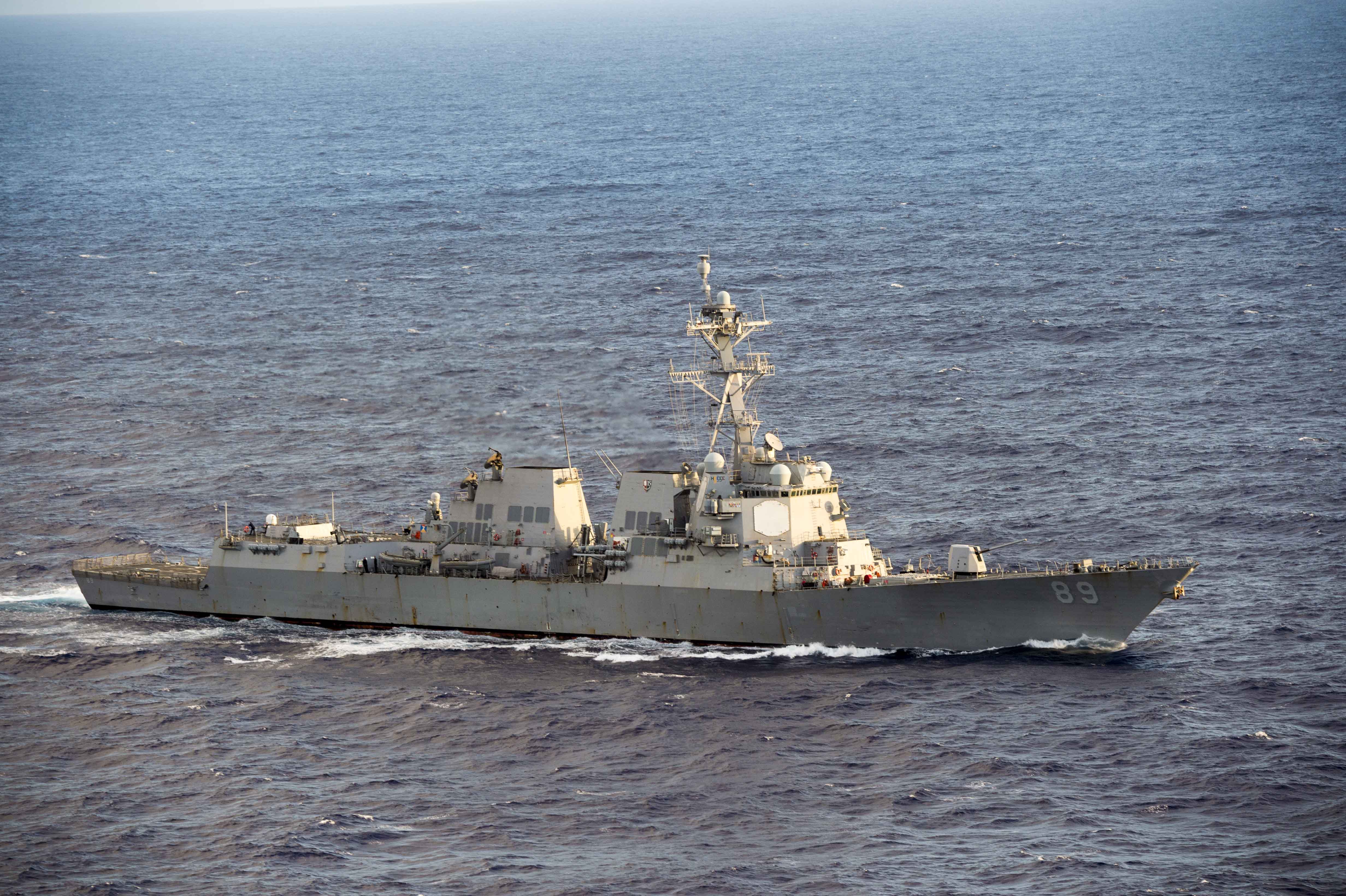The US navy’s guided-missile destroyer warship, the USS Decatur, which had entered within 12 nautical miles or 22.2 kilometers off the contested Spratly island chain in the South China Sea, was stopped by a Chinese destroyer and forced to head outside the limit, which is designated as territorial waters by the 1982 United Nations Convention on the Law of the Sea.
The territoriality of the island is contested by multiple countries in rim of the South China Sea, but is currently under the control of China whose southernmost tip of the mainland is about 1,000 kilometers away.
The Decatur entered these waters on Sunday to challenge the Chinese territorial claim over this region, following which an US official told AFP that the “Decatur sailed within 12 nautical miles of Gaven and Johnson reefs in the Spratly Islands” to conduct, what he called, a “freedom of navigation operation.”
Taking note of the Decatur’s entry, China sent a Luyang-class guided-missile destroyer which, sailing towards the Decatur, reached within 45 metres of its bow, following which the latter had to maneuver to avoid a collision.
US Pacific Fleet deputy spokesman Nate Christensen complained that the Chinese warship “approached USS Decatur in an unsafe and unprofessional maneuver”, and “conducted a series of increasingly aggressive maneuvers accompanied by warnings for Decatur to depart the area.”

The Chinese ministry of defense said in a statement, “The Chinese vessel took quick action and made checks against the US vessel in accordance with the law, and warned it to leave the waters,” adding, “The US side repeatedly sends military ships without permission into seas close to South China Sea islands, seriously threatening China’s sovereignty and security, seriously damaging Sino-US military ties and seriously harming regional peace and stability.”
Speaking to BBC, Mahathir Mohamad, the Prime Minister of Malaysia – another country in the region that is concerned about the rising tension – said on Monday, “China has every right to go wherever they want to go, but please don’t prevent ships from passing through the Straits of Malacca and the South China Sea.”
However, making a distinction between freedom of navigation of commercial ships and that of warships, he added, “Our policy is to not have battleships and warships in the South China Sea because if people start stationing their warships there, there will be tension, there will be conflict and it may result in a war.”
Tensions over South China Sea – the control over which China believes is crucial for defense against what it terms American encirclement – have been rising, especially over the last two months, with the US and Japan aggressively carrying out joint military drills. In August alone, the US flew B-52 bombers four times over the East and South China Seas.
Early in September, Business Insider reported, “US Air Force B-52s, B-1s, and B-2s are still flying out of Anderson Air Force Base in Guam to maintain the Continuous Bomber Presence, as it is known, patrolling around the Korean Peninsula and the South China Sea to build readiness and let allies and rivals alike know that the US is watching the region,” adding, on an enthusiastic note, “The B-52 and B-2 are capable of carrying nuclear weapons on patrols.”
“Everybody loves the B-52. [It] is one of the most recognizable airplanes in the world; it carries a lot of different weapons types,” the director of operations for the American 20th Expeditionary Bomb Squadron had commented.
On the 23rd and 25th of September, the US flew a single B-52 Stratofortress over the South China Sea. On September 26, another bomber “departed Andersen Air Force Base, Guam, and conducted training in the vicinity of the East China Sea. The Stratofortress then completed multiple integrations with 12 Koku Jieitai F-15s and 4 F-2s [of the Japanese]”, according to the official website of Pacific Air Forces.
These Continuous Bomber Presence operations began as early as March 2004.
The very next day, Britain’s warship, HMS Argyll, came alongside Japan’s biggest warship, the Kaga helicopter carrier, for joint naval drills in the Indian Ocean, after which the duo started on its course to the South China Sea.
In retaliation, on September 28, Chinese fighter jets and bombers flew over the South China Sea for “live-fire shooting drills”, the targets of which appeared to be simulated warships in the sea.
Two days later, when the near collision between the American and Chinese warships happened off Spartly islands, China cancelled the high-level security meeting with Defense Secretary Jim Mattis, which was scheduled around the middle of this month.





